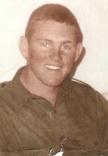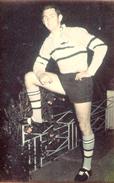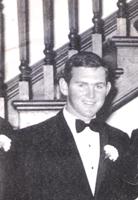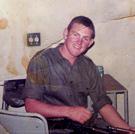|
3rd Battalion Royal Australian Regiment
Your FaithfullyJapan - Korea - Malaya - Borneo - Vietnam - East Timor - Solomons - Iraq - Afghanistan |
| 3rd Battalion Royal Australian Regiment |
|
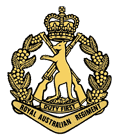 |
|
| Roll of Honour | |
| Pte Paul Manning KIA 2nd March 1971 |
|
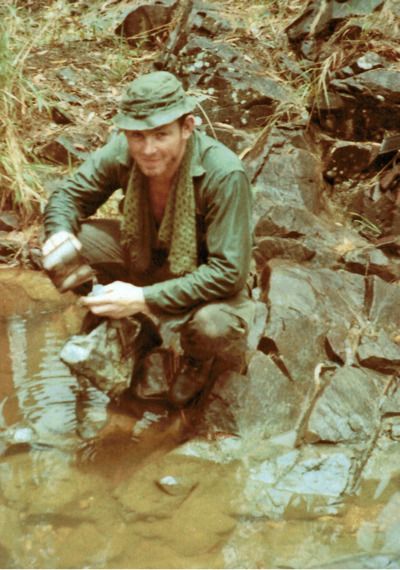 |
|
Last Post Ceremony Pte Paul Manning Life Story Today, we remember and pay tribute to Private Paul Manning. Paul Manning was born on 30 July 1951 at the Martyr Hospital, Newcastle, the second of three children of Vincent and Deidre Manning. Paul spent his early years growing up at Kilaben Bay, Lake Macquarie. He was keen on sports, playing rugby and squash, and enjoying swimming and boxing. Manning attended All Hallows College at Bathurst and then St Stanislaus College. He was a noted rugby player, and an enthusiastic member of the school’s 1st Fifteen. He also served as a member of the school’s army cadet unit. In August 1967, Manning joined the New South Wales Police Academy, training as a police cadet. After training for a year and wanting something more, he decided to follow in his father’s footsteps and join the army. His father Vincent had been an original member of the Australian Special Air Service. Paul Manning joined the Australian Regular Army in Sydney on 4 September 1968. After basic training at Kapooka, he was sent to the Infantry Training Centre at Singleton, and was regarded “a reliable soldier who works well”. His next posting was as a rifleman in the 3rd Battalion, the Royal Australian Regiment (3RAR), then based at Woodside, South Australia. On arrival in early April 1969, he was posted to 10 Platoon, D Company. In early September, Manning was promoted to lance corporal. Less than a fortnight later, he suffered a knee injury while playing rugby for 3RAR. After surgery he spent the rest of the year in rehabilitation. In February 1970 he attended a promotion course, passing two of the three required subjects. His course report stated: “This soldier has the potential to become a very good NCO and should be encouraged. He has the ability and drive, but at this stage lacks the knowledge.” He was recommended to re-attend the failed part of his course and to be a section 2IC with guidance and supervision. As the battalion continued to prepare for deployment, at the start of May D Company was sent to the Jungle Training Centre to attend a battle efficiency course. Further training took place at Puckapunyal where the men worked co-operatively with tanks. In mid-September, Manning went absent without leave for a day. Combined with a civil offence the previous month, this saw him heavily fined and reduced in rank to private. Despite this blemish on an otherwise clean record, Manning attended courses and in October passed the final subject required to be promoted to corporal. On 15 February 1971 the main body of 3RAR sailed from Port Adelaide aboard HMAS Sydney, bound for Vung Tau in South Vietnam. Only days after arriving, the battalion began its shakedown operation outside the wire of Nui Dat. On 2 March, patrols had had minor encounters with the enemy, who were thought to be from D445 Provincial Mobile Battalion. That evening, the four rifle companies, supported by tanks and armoured personnel carriers, went into night harbour positions. D Company, located a short distance away from the main battalion, was hit almost as soon as it had completed its defensive setup. The enemy opened up with automatic rifle and machine-gun fire and what was possibly a satchel charge was thrown into D Company’s positions. The explosion killed Manning’s platoon commander, 22-year-old Lieutenant John Wheeler, and wounded another man. Shortly afterwards, Manning was shot through the neck and killed. The dead and wounded were evacuated by a US medevac helicopter which flew in to provide assistance. The contact continued sporadically during the night until the enemy withdrew after 6 am. Manning’s body was taken to 1 Australian Field Hospital at Vung Tau before being returned to Australia. His funeral was held at the Our Lady Star of the Sea Church at Miranda, and he was laid to rest in the Woronora Lawn Cemetery. He was 19 years old. His name is listed on the Roll of Honour on my left, along with more than 500 others from the Vietnam War. This is but one of the many stories of courage and sacrifice told here at the Australian War Memorial. We now remember Private Paul Manning, who gave his life for us, for our freedoms, and in the hope of a better world. Michael Kelly |
|
Pte Paul Manning
Paul Manning was born on the 31st July 1951 in Mater Hospital, Newcastle. New South Wales and spent his early years growing up on the shores of Lake Macquarie, Kilaben Bay near Toronto, Newcastle. He was the second son to Vincent (Vince) and Deirdre Manning and sibling to older brother Garry and younger sister Deidre Manning (sister Deidre Manning deceased). Paul attended All Hallows College, Bathurst in country New South Wales) for his primary school education. On graduation Paul then attended St. Stanislaus College, Bathurst for his secondary school education. Whilst attending ‘Stannies’ Paul was an average student but he excelled in all forms of sporting endeavours. He was a proud member of the 1st fifteen rugby team. A very enthusiastic and spirited team member.
On leaving school Paul worked on a casual basis for Coles and Woolworths before joining the New South Wales Police Academy and trained as a police cadet.
After a period of time training as a police cadet Paul realised that he might not be suited as a Police officer and decided instead that he followed in his fathers footsteps and join the Australian Army. Father, Vince Manning was a founding member of the Australian Army Special Air Services so Paul joined the Australian Defence Force.
On the 2nd March 1971 Delta Company along with the other companies of the 3rd Battalion were in a night harboured position together with tank and APC Armoured defences. In the early evening the enemy probed the position and attacked the position.It was during this night contact with the Viet Cong that Pte Paul Manning and Lt. John Wheeler lost their lives. |
|
Everyone Had a Long Night The 4 Infantry Companies (A, B, C & D) had been deployed from Nui Dat on the 27th February, just two days after arriving in Vietnam. The “in theatre" operational training had commenced allowing all soldiers to familiarise with the duties expected of them in a theatre of war. Up to this point the climate and the work load had, I am sure, exhausted everyone. It was now the evening of the 2nd March. Contact with the enemy, presumed to be VC, had been reported by various elements of 3RAR during the day. Later in the afternoon, the Charlie (C) Company, 3 RAR Platoon Commanders were ordered by Company Commander (OC) to Harbour in a Company position a short distance away from Delta (D) Company in dry, scrubby country dotted with patches of bamboo and tall trees. From memory, the Harbour went in quickly and without too much fuss considering it was a sizeable manoeuvre practiced only once or twice before in Australia. The 3 Platoons (7, 8 & 9) linked on the circular defensive perimeter, back to each Platoon headquarters located in depth, and then to Company HQ in the centre of the large circle. We had this night 3 Centurion tanks join the Harbour and one of these tanks was located out on the 9 Platoon perimeter. There was no moon and the night was pitch black. The multi- company night Harbour of approximately 250 men had “gone in” efficiently and quietly extending over a large (now defended) area.. After the evening routine of placing gun picquets and other infantry duties had finished, a heavy contact was initiated with Delta Company nearby. Charlie Company immediately stood to as is the practice. The essential task was to keep alert for the enemy who were moving onto our position and to keep rules of engagement foremost in our minds. Firing at night could cause havoc among friend-lies as well as the enemy. I remember thinking at the height of the battle several hundred metres away how terrifying all this really was - with gun ships, artillery, mortars, flares and tanks all firing - but, how calmly and efficiently everyone was going about his business preparing to defend the Company perimeter. The artillery flares added to the spectacle. Word soon came through over the radio network that "Snow" Strickland had been severely wounded and several others badly hurt as well. About the same time, we heard the news that Pte Paul Manning and Lt. Johnny Wheeler had both been killed. The RAAF dust off was unable to come in for the priority wounded because the Landing Zone was not secure. An American medivac helicopter en route from Vung Tau to Long Dien saw and heard the Delta Company contact activity and offered to assist. The pilot directed in, under fire, over the Delta Company position and, apart from calmly keeping in touch with the boys on the ground who were hooking up "Snow" and the others in the dark, he only once asked without a tremor, "Hey you guys, can ya hurry up!!". The helicopter was receiving ground fire with the helicopter's blades swinging just millimeters over the tops of the trees, but he and his crew refused to leave the hover which I thought was so typical of Americans, particularly their medivac pilots. The Americans awarded "The Team" a citation. Whatever unit flew those bloody medivacs should have received a similar commendation. JW (Lt. John Wheeler) had many friends. He was a career soldier and trained at Duntroon Military College, a highly respected leader because of his competence and personality. I had introduced John to his fiancee back in Oz (Australia) and his death really bowled me over. I never saw his fiancee again, and none of us were able to say goodbye to him until 20 years later. Such was the nature of the war. |
|
A Story From The Suburbs Of Adelaide When John Callaghan and his partner Louanne de Laeter visited a memorial at Henderson Reserve, Montague Farm, which Honours Vietnam veterans, they were deeply touched. Returning to their home in the same suburb, they decided to research the meaning behind their street name, Wheeler Avenue. Streets in the Montague Housing estate were named in dedication of South Australians who were killed in Vietnam. The suburb had been developed with the help of a Vietnam Veteran. Through their research John and Louanne discovered that their street was named as a tribute to 22-year-old Lt. John Wheeler who died in combat in an explosion that occurred during an enemy attack on March 2, 1971. Their research bought them into contact with one of John’s friends, who also served in the 3rd Battalion Royal Australian Regiment. When the explosion took place on the evening of the 2nd March Lt John Wheeler died along with his friend and comrade Private Paul Manning. John and Louanne’s research found that not only had both men died together that night; they are also united in the street names of the suburb. Wheeler Avenue adjoins Manning Crescent in the suburb. John and Louanne have put together a touching memorial to Lt. John Wheeler inside their home. On the front door of their home a photograph of John Wheeler has been installed along with the Vietnam veteran ribbon. “We just want to say, hey, we know what you did, and we honour you and respect you,” John says. |
|
| Return to Roll of Honour | |
Pte Paul Manning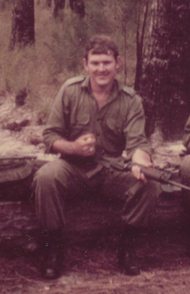 |
|
|
|
 |
|
Australian War Memorial Location on the Roll of HonourPaul Manning name is located at panel 4 in the Commemorative Area at the Australian War Memorial |
|
 |
| The 3 RAR Internet site gratefully acknowledges the assistance of 101 design of Wollongong. www.101design.com.au |
